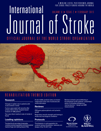Transient focal neurological episodes, cerebral amyloid angiopathy, and intracerebral hemorrhage risk: looking beyond TIAs
Abstract
When most doctors encounter older patients with transient focal neurological symptoms, they usually suspect a diagnosis of transient ischemic attacks or some of their known mimics (including migraine auras or focal seizures). This article emphasizes new observations on transient focal neurological episodes in the context of cerebral amyloid angiopathy, a common but under-recognized small vessel disease most often encountered as a cause of symptomatic lobar intracerebral hemorrhage. Transient focal neurological episodes in cerebral amyloid angiopathy are of clinical and pathophysiological interest because they can mimic transient ischemic attacks, but are probably more often related to bleeding (especially superficial cortical siderosis or focal convexity sub-arachnoid hemorrhage) rather than ischemia. Importantly, such episodes may also herald a very high future risk of symptomatic intracerebral hemorrhage. The article highlights scenarios encountered in clinical practice and discusses implications for patient care including: (a) the value of blood-sensitive magnetic resonance imaging sequences in investigating transient focal neurological episodes; and (b) treatment implications, as giving antiplatelet or anticoagulant drugs for these episodes could increase the risk of serious intracerebral hemorrhage.




